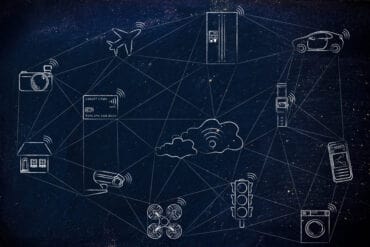
A majority of companies (85%) agree that automation needs to play a greater role in supporting their business continuity strategies.
Forced shutdowns for events as the current Covid-19 pandemic may be exposing many business’s weaknesses in business continuity planning, especially as everyone is suddenly working from home. The problem is, the technology may not be ready for this sudden dispersal of the workforce.
It isn’t just health emergencies that could knock the wind out of a business, of course — there are the run-of-the-mill fires, hurricanes, and floods that test business resolve. A couple of decades ago, I had the opportunity to tour what was then one of the major disaster recovery centers for what was then called Sungard Recovery Services, housed within a former tank production factory in Philadelphia. The center had every type of system you could think of onsite — IBM mainframes, Honeywell mainframes, DEC VAX machines and everything else. In the event of a disaster that took a company’s data center down, its technicians would bring backup tapes of data to this recovery center, load the data into the appropriate system, and have everything back up and running in a couple of days.
See also: AIOps Prevent Risk Of Digital Service Outages
In most cases, the anticipated disasters never came. The only engagement with the recovery center was a twice-yearly practice drill, in which technicians would come in for a long weekend (cots were provided) to test their ability to bring up their corporate systems.
Of course, that’s not how things are supposed to work in today’s digital age. If a data center or critical application goes down, redundant systems — in secondary sites or in the cloud — are supposed to immediately pick up the slack so it barely represents a hiccup to end users or customers. In many cases, this redundant, real-time failover works well. But when failover isn’t so instantaneous, and there’s a possibility a business could be out of commission, many companies lack long-term capabilities.
Despite impressive, highly available technology, most companies still are not ready with business continuity and disaster planning. In a recent survey published by AvidXchange, 40% of enterprises reportedly did not have business continuity plans in place. And while 60% have a continuity plan in place, only 37% actually have the necessary technology to enable employees to work from home as part of their strategy. Furthermore, only 19% said their employees have the right technology to work from home.
This is especially the case with technology that helps manage highly critical processes, such as handling sensitive financial information. The study reveals a gap in technology preparedness in connection to mission-critical processes such as managing invoices and making payments. If finance staff had to work from home, for example, only 54% of businesses would be able to make all of their payments, and 12% wouldn’t be able to make any payments. More than half of business leaders would anticipate a significant impact on their finance team’s ability to process invoices.
A majority, 85%, agree that automation needs to play a greater role in supporting their business continuity strategies.
Of course, the backup and recovery teams themselves are likely to be working remotely through the Covid-19 stay-at-home period. The folks at Cobalt Iron provide the following bits of advice to keep things as resilient as possible: enable remote management of backup operations, limit the need to log into servers, and leverage automation to minimize repetitive tasks.



























